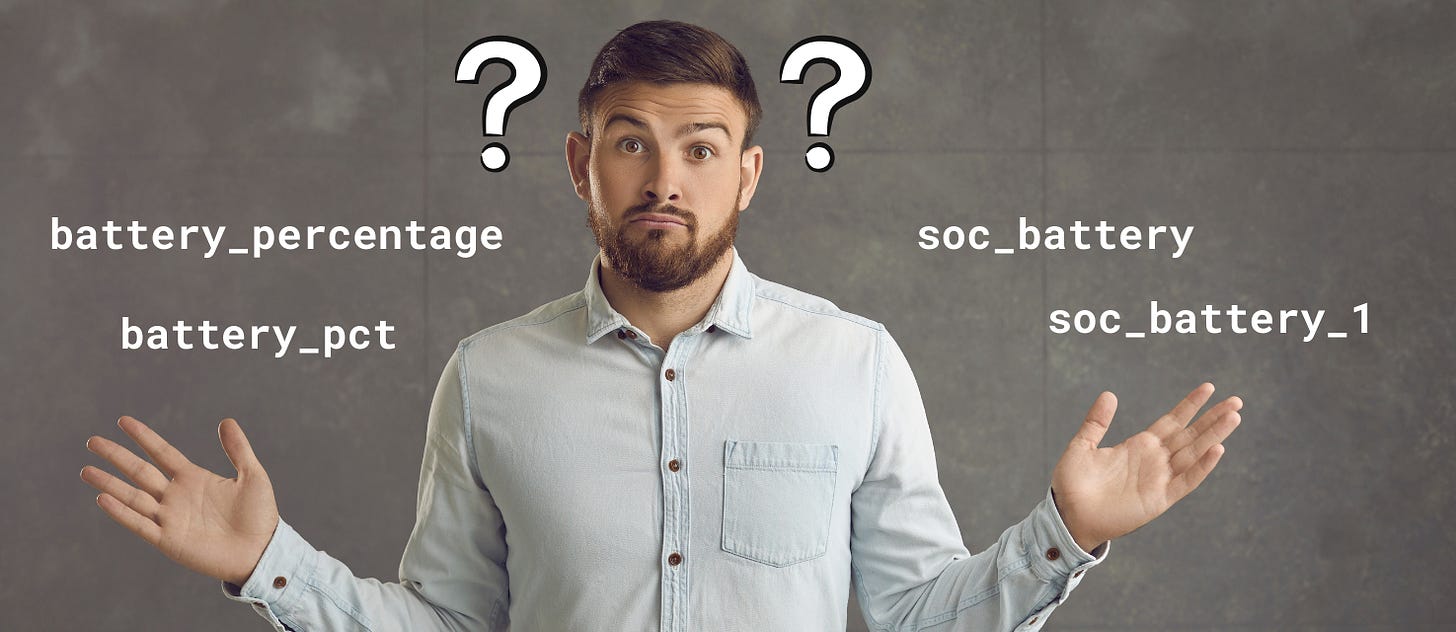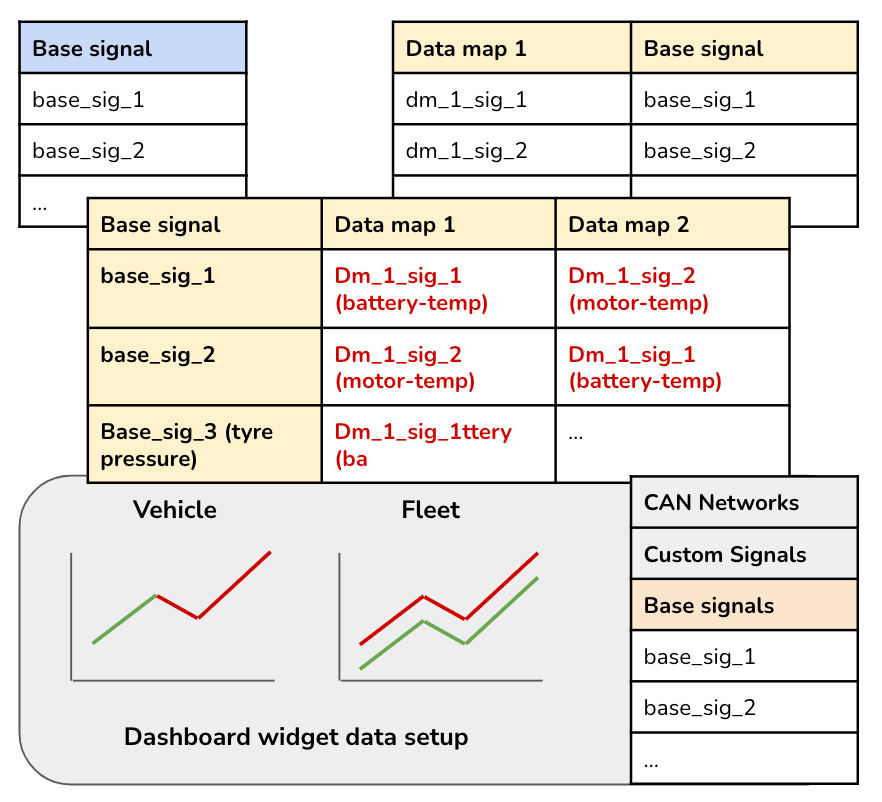Signal Harmonization is the Secret Sauce to Smarter Vehicle Data Management
Why Automotive OEMs Need a Unified Data Signal Strategy
Prefer audio? Listen here:
Unlike traditional vehicles with fixed hardware configurations, SDVs evolve continuously, incorporating new features, over-the-air (OTA) updates, and diverse Electronic Control Unit (ECU) ecosystems. Each of these changes introduces variations in network data specifications, making it challenging to:
Maintain data consistency across vehicle programs
Enable cross-vehicle analytics for predictive maintenance and fleet intelligence
Support long-term software compatibility across generations of vehicles
Picture this: today’s vehicles aren’t just cars—they’re rolling computers. And these computers don’t speak one language. A single vehicle might juggle multiple CAN buses and ethernet networks, each with its own dialect of data structures. Throw in different suppliers, evolving ECU functionalities, and shifting data formats over time, and OEM teams can find themselves in a real state of confusing data chaos.
This is where signal harmonization comes in, the universal translator of vehicle data. It’s a strategic approach to creating a single source of truth for vehicle signals. With signal harmonization, OEMs can standardize, visualize, and seamlessly access data across different vehicle programs, enabling an efficient, scalable, and future-proof vehicle data management strategy.
The Hidden Cost of Signal Fragmentation
Many OEMs operate under the assumption that managing multiple network specifications is just an inevitable part of vehicle development. But let’s be real—this fragmented approach is like trying to organize your life with sticky notes scattered across the house. The lack of a harmonized signal strategy leads to inefficiencies and operational headaches.
Inconsistent Data Representation Across Vehicle Programs
Imagine a scenario where the same physical signal—say, battery state of charge—is named differently across models:
Program A: battery_percentage
Program B: soc_battery
Program C: soc_battery_1 (for multi-battery systems)
It’s like having three nicknames for the same friend—sure, you know who they are, but good luck trying to find them in your contact list. Multiply this across an entire fleet, and you can imagine the headache this can cause, making it difficult to:
Conduct fleet-wide data analysis
Enable predictive maintenance based on historical trends
Create unified data models for AI-driven applications
ECU Updates Become Compatibility Nightmares
Updating ECUs should feel like upgrading your phone—smooth and seamless. Instead, it’s often like trying to run the latest app on a flip phone. ECUs evolve, gaining new capabilities and transmitting more data over the network, which means:
New signals are introduced while old ones are renamed or deprecated.
Data interpretation changes, forcing engineering teams to play constant catch-up.
OEMs struggle to support legacy data, complicating long-term vehicle performance analysis.
Supplier Variability Creates Data Silos
Working with multiple suppliers is like merging playlists from three different music apps—each with its own naming conventions and formats. This creates:
Increased complexity in integrating supplier data into a common platform.
Difficulties in aggregating data for remote diagnostics and fleet-wide analytics.
The Solution: How Signal Harmonization Works
Now enter signal harmonization, your data superhero. Think of it as the universal translator for vehicle signals, swooping in to untangle the chaos. Here’s how it saves the day:
Creating a Unified Signal Dictionary
Signal harmonization maps all those different signal names to a single, standardized format. It’s like creating one dictionary to rule them all. This can be built on:
The Vehicle Signal Specification (VSS): An open industry-adopted standard for vehicle data that serves as the foundation of signals that are mapped.
Custom Extensions: If a signal is missing from the VSS, OEMs can extend it with proprietary signals while maintaining structural consistency.
So, instead of wrestling with battery_percentage, soc_battery, and soc_battery_1, OEMs can map them all to one harmonized signal, ensuring uniformity across models and generations.
Dynamic Visualization Across Vehicles and Time
Once signals are harmonized, OEMs gain superhero-level insights by visualizing data in two key ways:
Cross-Vehicle Comparison: Analyze data across multiple vehicles with different software versions and hardware configurations.
Longitudinal Analysis: Track a single vehicle’s performance over time, even if signal definitions have changed across software updates.
Better Data Access Through APIs
Forget manual decoding—that’s yesterday’s problem. When APIs are designed to work with harmonized datasets, engineers can now access standardized data through API calls for a myriad of use cases such as:
Remote diagnostics
Predictive maintenance models
Vehicle performance analytics
With harmonized data APIs, engineers don’t need to decipher a new signal format for every vehicle. They just query the harmonized signals and get clean, consistent data.
Why Signal Harmonization is a Game-Changer for Automotive OEMs
OEMs that embrace signal harmonization gain a major competitive edge in their software-defined vehicle strategy. Imagine cutting down application development time and cost because your data is finally speaking one language. That means more time to focus on what really matters—monitoring vehicle health, enhancing the product experience, and delighting customers.
In the world of connected, software-defined vehicles, signal harmonization isn’t just a nice-to-have—it’s essential. It’s the key to breaking down data silos, simplifying analytics, and future-proofing your entire data strategy. So, if you’re tired of wrestling with messy data, it’s time to let signal harmonization step in and save the day.
Today’s Article is Brought to you by Sibros
Sibros provides a turn-key vehicle data logging solution that leverages signal harmonization as a core capability to alleviate data chaos for software-defined vehicles, which provides:
Automated mapping of signals to VSS and custom extensions
Seamless cross-vehicle analytics and remote diagnostics
Unified data access through standardized APIs
Get in touch with Sibros to learn more.






